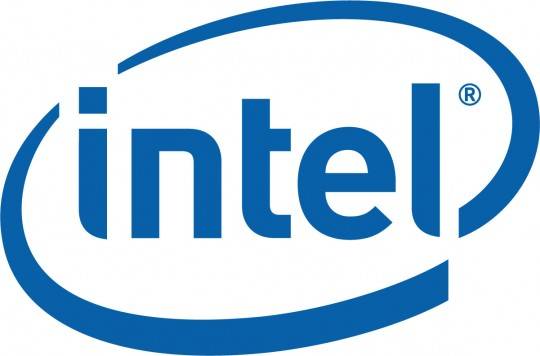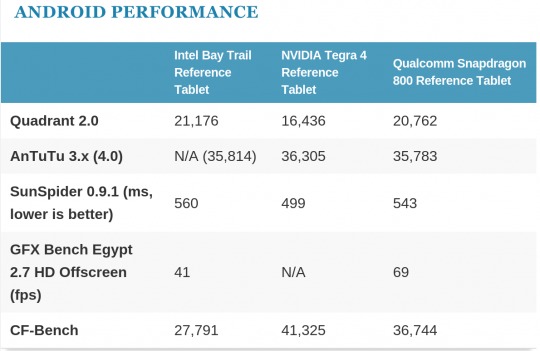
Based on their 22nm Silvermont architecture, Intel’s BayTrail processors have a lot of promise. Traditionally a PC chipset manufacturer, Intel recognizes the growing shift toward mobile devices, and is planning accordingly. In an attempt to get their BayTrail technology noticed, Intel allowed Engadget to benchmark the processor on an Android reference tablet.
Intel allowed their highest specced processor to be tested, which is the quad-core Z3770. According to Intel, that processor is capable of speeds up to 2.39GHz. It also has an Intel HD Graphics engine at 311 MHz. This stands in nearly direct competition to the Qualcomm Snapdragon 800, a SoC offering nearly identical prowess. The Adreno 330 and Krait architecture often clocks in at well over 2 GHz, as more and more newer phones are seeing. The Snapdragon lineup is already well implemented, and well received.
The results from the Engadget test, which you can see below, show that the Snapdragon 800 is on par with the BayTrail at just about every turn, and the differences are often minimal. The real difference is that the Snapdragon is ARM architecture designed for mobile devices, and Intel is not.
As Intel prepares to enter the mobile space, they’ll need a chipset that can keep up. While the BayTrail certainly test well, benchmarks often aren’t the whole story. There is battery life to think of, as well as software implications. The tests are a good sign, but we’ll have to see it in a few real-world situations first.











You only tell the readers on one spec. that lower is better. Tell them on each spec. so they don’t have to go look it up.
Also include the power needed to achieve these benchmarks. That is the true value of these benchmarks because there are plenty of Intel processors that blow these specifications out of the water.
Snapdragon 800 inside a 5″ smartphone with 11.4 Wh battery lasts about (real world measurements):
22.4 hours under very light usage (0.51 W);
4.8 hours under heavy use and GPU on idle (2.38 W);
0.92 hours of 3D gaming (12.4 W);
So the GPU itself consumes around 10W (the device gets REALLY hot). The display consumes about 0.7 W.
Now this is the Snapdragon 800 with GPU clocked only at 450 Mhz (the one in the test is 550 MHz), so 12.2 W for this GPU and 14.6 W for the whole device is probably a realistic estimation.
Z3770 SoC consumes <2 W under heavy load and ~4 W when 3D gaming. A realistic estimation would be about 5W in full 3D for the whole device, that is almost a third of the power requirements of the Snapdragon 800.
Based on the calculations, Intel has a much higher performance per watt ratio, which is what counts in the mobile segment.
“Snapdragon 800 is on par with the BayTrail at just about every turn, and the differences are often minimal”
Really?
Snapdragon incinerates BayTrail in Games and Graphics performance.
Snapdragon GFX score is 68% (SIXTY EIGHT PERCENT!!) higher that Intels chip… Goodnight Intel…
Why doesn’t intel make a arm chip for smartphones. They have the manufacturing process that rivals all the other chip makers, the only reason why they are on “par” (they aren’t really on par, snapdragon is ahead) with snapdragon is because snapdragon is using arm.